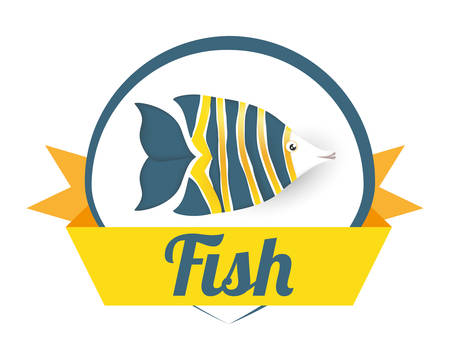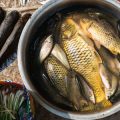Introduction to Indian Fisheries and Indigenous Species
India, a land of flowing rivers and tranquil ponds, has always woven its story alongside the gentle lapping of water. Here, the art of fishing is not just a livelihood but a tradition that runs deep through the heart of rural life. The country’s aquatic heritage is as diverse as its cultures, with each region cherishing its own freshwater treasures. Among these, Rohu (Labeo rohita), Catla (Catla catla), and Mrigal (Cirrhinus mrigala) stand out like shimmering jewels in India’s fisheries crown.
These indigenous fish species are more than just ingredients for a hearty curry or spicy fry—they are symbols of sustenance and celebration. In Bengal, the aroma of fresh Rohu cooked with mustard oil fills homes during family gatherings, while in Andhra Pradesh and Odisha, Catla graces wedding feasts and village festivals. Mrigal too finds its way onto countless thalis across North India, nourishing generations with its delicate flavor.
For millions living in riverine villages or along serene tanks and lakes, these fish are not only central to their cuisine but also form the backbone of their livelihoods. Small-scale fishers rise before dawn, casting nets passed down from their forefathers, hoping for a good catch that will support their families and uphold age-old traditions. Each catch tells a story—of the changing seasons, community bonds, and respect for nature’s bounty.
As we journey through this aquatic landscape, it becomes clear why Indian research institutes have poured so much effort into nurturing Rohu, Catla, and Mrigal. These fish are at the very heart of local economies and culinary delights—making innovations in their cultivation vital not only for food security but for preserving cultural identity. With every new technique or sustainable practice developed by Indian scientists, the ripples spread far beyond laboratories into the daily rhythms of village life.
Leading Indian Research Institutes and Their Mandates
India’s journey in freshwater aquaculture innovation, especially concerning the iconic trio—Rohu, Catla, and Mrigal—has been shaped by the relentless efforts of several visionary research institutes. Let’s embark on a brief journey through the corridors of these pioneering institutions, each with its unique mandate and flavour of scientific excellence.
Key Institutes at the Forefront
| Institute | Full Name | Mandate & Vision |
|---|---|---|
| CIFA | Central Institute of Freshwater Aquaculture | Specializes in research, training, and technology development for freshwater aquaculture, with a strong focus on improving productivity and sustainability of Rohu, Catla, and Mrigal culture systems. |
| CIFE | Central Institute of Fisheries Education | A leader in fisheries education and human resource development, CIFE drives innovative research and capacity building to empower farmers and professionals across India’s diverse aquaculture landscape. |
| ICAR | Indian Council of Agricultural Research | The apex body overseeing all fisheries research institutes in India; sets strategic priorities for sustainable aquatic food production and supports cutting-edge innovations benefiting rural livelihoods. |
CIFA: The Torchbearer for Freshwater Fish Farming
Nestled in Bhubaneswar, Odisha, CIFA is often regarded as the cradle of freshwater aquaculture breakthroughs. With its finger firmly on the pulse of grassroots needs, CIFA’s scientists blend local wisdom with modern science to create practical solutions—be it improved breeding protocols or resilient fish strains that thrive in Indian ponds under changing climates.
CIFE: Empowering Through Education and Research
Mumbai-based CIFE stands tall as a beacon for academic excellence. It is not just about books here—the institute encourages hands-on learning by connecting young minds with seasoned researchers. Through their work, CIFE helps shape the next generation of fishery professionals while rolling out impactful projects that directly benefit smallholder farmers cultivating Rohu, Catla, and Mrigal across the subcontinent.
ICAR: Guiding the Bigger Picture
As the umbrella organization headquartered in New Delhi, ICAR ensures that every innovation aligns with national goals—food security, environmental sustainability, and rural prosperity. By fostering collaboration among specialized institutes like CIFA and CIFE, ICAR keeps India’s freshwater fishery sector swimming ahead of global trends while staying rooted in local realities.

3. Breakthroughs in Breeding and Seed Production
India’s fisheries research institutes have truly embraced the spirit of jugaad—our own way of finding clever solutions to local challenges—especially when it comes to breeding and seed production for Rohu, Catla, and Mrigal. Gone are the days when farmers relied solely on the mercy of monsoons and natural spawning. Today, innovative hatchery techniques like induced breeding using pituitary gland extracts and synthetic hormones have become widespread, allowing fishers to synchronize spawning cycles with market demand and climatic conditions.
Selective breeding is another fascinating area where our scientists have made a mark. By carefully choosing broodstock with desirable traits such as faster growth, better disease resistance, and improved flesh quality, Indian researchers have developed strains that thrive in our diverse ponds, tanks, and riverine systems. This attention to genetic improvement ensures that our beloved Rohu, Catla, and Mrigal not only yield more but also adapt well to fluctuating environmental conditions across states—from the cool waters of Uttarakhand to the balmy tanks of Andhra Pradesh.
The story doesn’t end there. Seasonal seed production strategies tailored for Indian conditions are ensuring a steady supply of healthy fingerlings all year round. Institutes have devised methods to stagger breeding cycles, maintain optimal water temperatures, and manage broodstock nutrition using locally available feed ingredients. These thoughtful adaptations mean that fish farmers from Odisha to Kerala can plan their stocking schedules without being at the mercy of nature’s calendar—a true boon for rural livelihoods and sustainable aquaculture growth.
4. Sustainable Nutrition and Feeding Innovations
When it comes to nourishing our beloved Rohu, Catla, and Mrigal, Indian fisheries research institutes have truly gone the extra mile. The focus has shifted from just feeding fish to ensuring their diets are resource-efficient, sustainable, and locally inspired. Let’s explore how home-grown feed formulations and indigenous ingredients are making a splash in the world of aquaculture nutrition.
The Rise of Home-Grown Feed Formulations
Traditional feeds often relied on costly imported ingredients, but Indian scientists have cleverly harnessed local resources. Instead of expensive fishmeal or soya, innovative formulations now include easily available rice bran, mustard oilcake, groundnut cake, and other agro-industrial by-products. This approach not only cuts costs for farmers but also reduces environmental impacts.
Key Local Ingredients in Fish Feeds
| Ingredient | Source | Benefits |
|---|---|---|
| Rice Bran | Paddy Fields | Rich in energy; readily available across India |
| Mustard Oilcake | Mustard Processing Units | High protein content; boosts growth rates |
| Groundnut Cake | Peanut Farms | Improves palatability; supports healthy development |
Resource-Efficient Diets: Doing More with Less
The move towards resource-efficient diets is all about achieving better growth with fewer inputs. Research institutes like CIFA (Central Institute of Freshwater Aquaculture) and CIFRI (Central Inland Fisheries Research Institute) have developed balanced feed formulas tailored for different growth stages. These diets maximize nutrient uptake, meaning every handful of feed goes further—a win-win for both farmers and the environment.
Impact on Growth Rates: A Real Game Changer
The proof is in the pond! Trials show that using these locally-formulated diets can boost average daily weight gain by 10-20% compared to conventional methods. Fish are not only growing faster but also healthier and more resilient. The table below illustrates this impact:
| Fish Species | Traditional Feed Growth Rate (g/day) | Innovative Feed Growth Rate (g/day) |
|---|---|---|
| Rohu | 1.2 | 1.5 |
| Catla | 1.3 | 1.6 |
| Mrigal | 1.1 | 1.3 |
This approach ensures that the heart of Indian aquaculture beats in harmony with nature—nourishing not just our fish, but our communities as well.
5. Health and Disease Management Innovations
In the vibrant world of Indian aquaculture, keeping Rohu, Catla, and Mrigal healthy is a daily priority for both scientists and fish farmers. Over the years, Indian Fisheries Research Institutes have introduced innovative ways to manage fish health, blending traditional wisdom with modern science in a truly desi manner. Indigenous medicines—like herbal extracts derived from neem, turmeric, and tulsi—are now commonly used to treat common ailments, offering sustainable alternatives to synthetic drugs. These age-old remedies, passed down through generations, are being validated by researchers for their efficacy against bacterial and parasitic infections.
But that’s not all. The adoption of probiotics has gained momentum in recent times. Probiotics—friendly bacteria added to fish feed or water—help boost immunity and gut health in Rohu, Catla, and Mrigal. Farmers across states like Andhra Pradesh and West Bengal fondly recall how these bio-solutions have reduced disease outbreaks and improved overall fish growth. This eco-friendly approach is winning hearts because it avoids chemical residues in ponds—a crucial concern for both exports and local consumption.
Community-based health management is another shining innovation. Institutes have rolled out training camps where local farmers learn to identify early signs of diseases like Epizootic Ulcerative Syndrome (EUS) or Aeromonas infections. Armed with knowledge and low-cost test kits developed by Indian researchers, communities can act quickly—isolating affected fish and applying targeted treatments before problems escalate. This bottom-up approach creates a sense of shared responsibility, turning disease management into a collective village affair rather than an individual burden.
These innovations are not just about keeping fish alive—they’re about ensuring that every harvest brings good fortune to families across India’s riverine landscapes. With a gentle blend of tradition and technology, Indian fisheries science is showing the world how sustainable aquaculture can thrive on local ingenuity and community spirit.
6. Tech Integration: Apps, IoT & Farmer Training
In the heartlands of India, where the rivers gently flow and fish ponds shimmer under the sun, a quiet digital revolution is taking place. Indian Fisheries Research Institutes are not only innovating in labs but also ensuring that these breakthroughs reach the hands of our grassroots fish farmers—those who nurture Rohu, Catla, and Mrigal every day. The bridge connecting research to reality? Technology woven into everyday life.
Mobile Apps in Local Tongues
Imagine a farmer in Andhra Pradesh or West Bengal pulling out his smartphone, opening an app in Telugu or Bengali, and receiving advice tailored to the exact needs of his pond. These regionally-adapted apps, developed by institutes like ICAR-CIFA and CIBA, offer step-by-step guidance on feeding schedules, water quality checks, disease alerts, and even weather predictions—all in familiar language and simple visuals. No more wrestling with unfamiliar English terms; now, vital information feels as close as a neighbour’s friendly chat.
IoT: Bringing Smart Farming Home
The integration of Internet of Things (IoT) devices has transformed many traditional ponds into smart farms. Sensors quietly measure oxygen levels, temperature, and pH, sending real-time updates straight to a farmer’s phone. When a subtle shift threatens fish health, an instant alert pops up—no need for guesswork or luck. This fusion of tradition and technology is empowering smallholders to make confident decisions and boost their yields.
On-Farm Training: Learning by Doing
But technology is most powerful when paired with human connection. Across India’s villages, fisheries scientists conduct hands-on training sessions right at the pond’s edge. Farmers gather beneath shady trees or beside glistening water to learn about new feed formulas, disease management techniques, and digital tools. Through live demonstrations and friendly Q&A sessions—often in local dialects—complex concepts become easy as sharing a cup of chai. The result? Farmers feel respected as partners in innovation, not just recipients of distant knowledge.
This seamless blend of mobile apps, IoT gadgets, and on-farm training is weaving a vibrant support network for India’s freshwater fish cultivators. As research flows from institutes to fields—and then back again through farmer feedback—the bonds between science and tradition grow ever stronger. In this way, innovation doesn’t just ripple across the water; it travels heart-to-heart along India’s riversides.
7. Empowering Communities: Women & Youth in Fisheries
Across the vibrant rivers and bustling markets of India, a quiet revolution is taking place—one where women and youth are at the heart of fisheries innovation. Thanks to pioneering research by Indian Fisheries Research Institutes, the journey of Rohu, Catla, and Mrigal has become more than just about fish; it’s now a story of community empowerment and fresh possibilities.
Women Leading Change in Aquaculture
Traditionally, women have played crucial roles in post-harvest handling and marketing of fish, but recent innovations are helping them step confidently into every stage of the value chain. Tailored training programs on hatchery management, water quality monitoring, and sustainable feeding practices are enabling women to run their own mini-hatcheries or form self-help groups (SHGs) for collective growth. These SHGs, supported by local institutes, foster financial independence and social recognition for rural women—transforming daily routines into success stories that inspire entire villages.
Youth as Catalysts for Sustainable Growth
The Indian fisheries sector is riding a new wave of youthful energy. Institutes across the country offer skill-building workshops and incubation centers focused on innovative breeding techniques and digital marketing for Rohu, Catla, and Mrigal. Young entrepreneurs are tapping into these resources to launch start-ups—from eco-friendly feed production to online fish marketplaces—infusing traditional practices with tech-savvy enthusiasm. Their ventures not only boost local economies but also set examples for peers to return to their roots with pride.
Stories Worth Celebrating
Consider the tale of Anjali from Odisha, who, after attending an institute-run workshop, started her own backyard hatchery. Or Rajeev from West Bengal, whose mobile app connects small-scale fish farmers directly with city buyers. These are not isolated events; they’re part of a growing movement powered by research-driven support systems. By nurturing such grassroot innovations, Indian Fisheries Research Institutes are ensuring that opportunities in aquaculture ripple outwards—reaching every aspiring woman and youth ready to dive into India’s ever-evolving blue economy.

